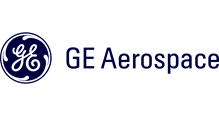
December 1 - 6, 2024
Boston, Massachusetts
Symposium Supporters
2024 MRS Fall Meeting & Exhibit
EL07.20.21
We recently introduced a dual-gradient metasurface platform1 that continuously encodes both spectral and Q-factor parameter spaces, all within a compact footprint. We used a dual-gradient metasurface design consisting of a two-dimensional array of smoothly varying subwavelength nanoresonators, each supporting a unique mode based on symmetry-protected bound states in the continuum. This results in 27,500 distinct photonic modes and a mode density approaching the theoretical limit for metasurfaces. When applied to surface-enhanced molecular spectroscopy, we demonstrated that our dual gradient achieves optimal sensitivity regardless of analyte concentration, which was previously unattainable.
Building on these insights, we have recently expanded our dual-gradient metasurface platform from the mid-infrared region to the visible spectrum (400–700 nm). Using a novel grating-based geometry, we addressed limitations of the original dual-ellipse design, achieving significantly higher Q-factors and strong signal modulation.
We are confident that dual gradients in the visible spectrum are an effective tool for studying nanoscale materials with optical transitions in this range, such as quantum dots and van der Waals materials.We are convinced that dual gradients provide a capable platform for investigating the full spectral and coupling-strength parameter space of complex material systems, with applications ranging from photocatalysis and chemical sensing to advanced quantum technologies, such as entangled photon generation.
1. Aigner, A., Weber, T., Wester, A., Maier, S. A. & Tittl, A. Continuous spectral and coupling-strength encoding with dual-gradient metasurfaces. Nat. Nanotechnol. (2024) doi:10.1038/s41565-024-01767-2.
Dual-Gradient Metasurfaces for Continuous Spectral and Coupling-Strength Encoding
When and Where
Dec 5, 2024
8:00pm - 10:00pm
8:00pm - 10:00pm
Hynes, Level 1, Hall A
Presenter(s)
Co-Author(s)
Andreas Aigner1,Thomas Weber1,Stefan Maier2,3,Andreas Tittl1
LMU München1,Monash University2,Imperial College London3
Abstract
Andreas Aigner1,Thomas Weber1,Stefan Maier2,3,Andreas Tittl1
LMU München1,Monash University2,Imperial College London3
Recent advancements in controlling light–matter interactions at the nanoscale have unlocked new possibilities to study complex and novel material systems. Two parameters are of critical importance for studying these interactions: the spectral overlap between an optical cavity mode and a material’s absorptive features, and the quality factor (Q-factor) of the cavity. The ability to simultaneously control both parameters would offer unprecedented control to investigate complex systems, such as multicomponent molecular mixtures or materials with novel electronic properties.We recently introduced a dual-gradient metasurface platform1 that continuously encodes both spectral and Q-factor parameter spaces, all within a compact footprint. We used a dual-gradient metasurface design consisting of a two-dimensional array of smoothly varying subwavelength nanoresonators, each supporting a unique mode based on symmetry-protected bound states in the continuum. This results in 27,500 distinct photonic modes and a mode density approaching the theoretical limit for metasurfaces. When applied to surface-enhanced molecular spectroscopy, we demonstrated that our dual gradient achieves optimal sensitivity regardless of analyte concentration, which was previously unattainable.
Building on these insights, we have recently expanded our dual-gradient metasurface platform from the mid-infrared region to the visible spectrum (400–700 nm). Using a novel grating-based geometry, we addressed limitations of the original dual-ellipse design, achieving significantly higher Q-factors and strong signal modulation.
We are confident that dual gradients in the visible spectrum are an effective tool for studying nanoscale materials with optical transitions in this range, such as quantum dots and van der Waals materials.We are convinced that dual gradients provide a capable platform for investigating the full spectral and coupling-strength parameter space of complex material systems, with applications ranging from photocatalysis and chemical sensing to advanced quantum technologies, such as entangled photon generation.
1. Aigner, A., Weber, T., Wester, A., Maier, S. A. & Tittl, A. Continuous spectral and coupling-strength encoding with dual-gradient metasurfaces. Nat. Nanotechnol. (2024) doi:10.1038/s41565-024-01767-2.
Keywords
nanostructure
Symposium Organizers
Viktoriia Babicheva, University of New Mexico
Ho Wai (Howard) Lee, University of California, Irvine
Melissa Li, California Institute of Technology
Yu-Jung Lu, Academia Sinica
Symposium Support
Bronze
APL Quantum
Enlitech
Walter de Gruyter GmbH
APL Quantum
Enlitech
Walter de Gruyter GmbH
Session Chairs
Ho Wai (Howard) Lee
Yu-Jung Lu




